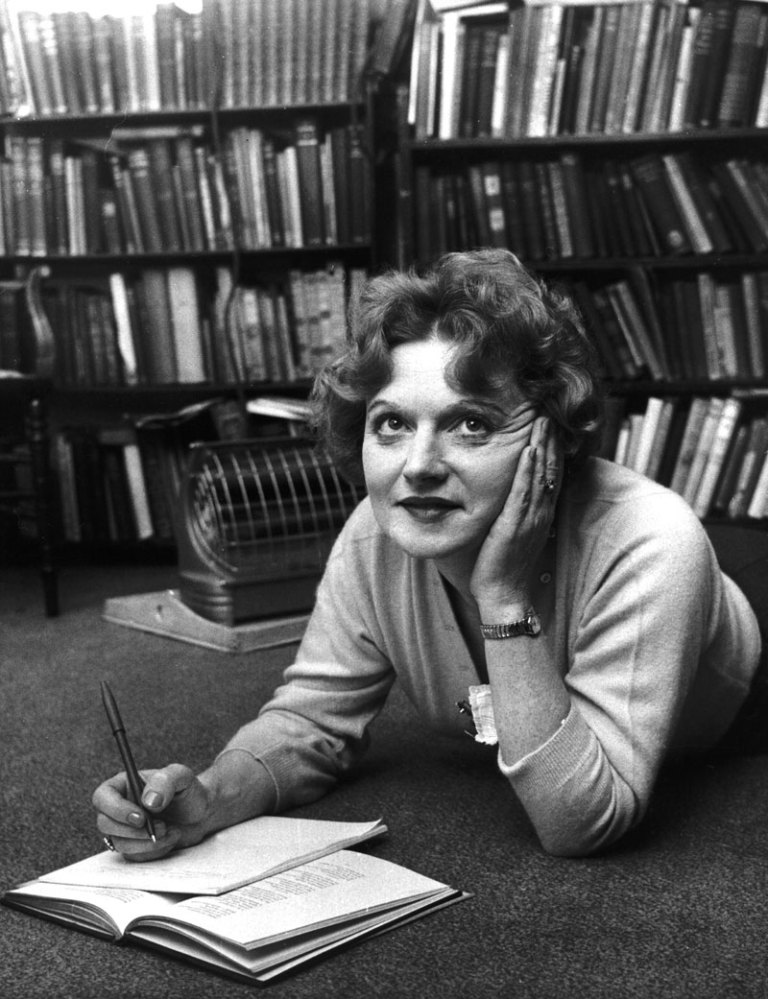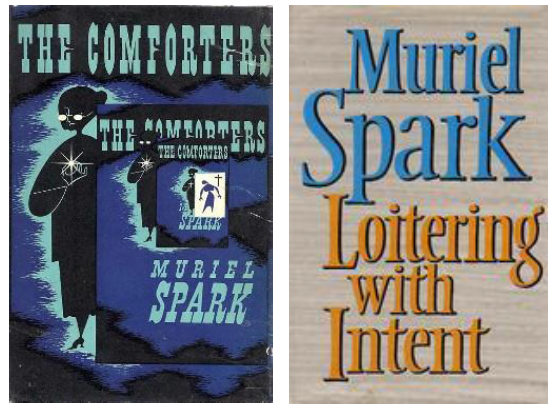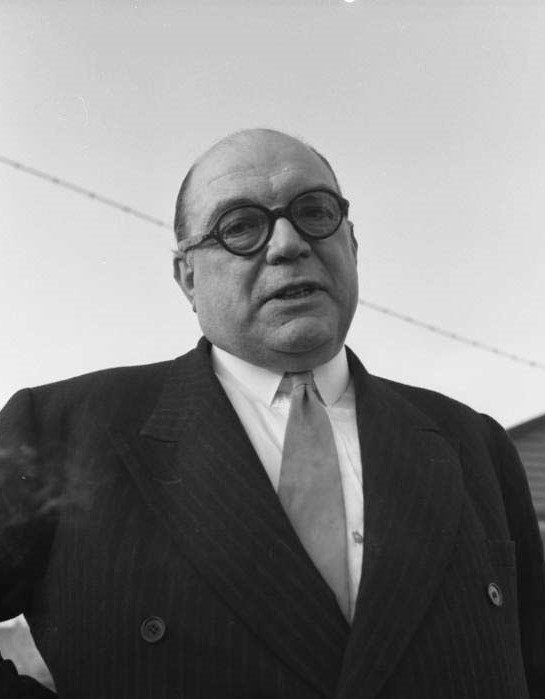Muriel Spark and plausibility
Beatriz Lopez finds traces of Spark’s wartime service in the PWE in two novels deeply concerned with the appearance of truth
Muriel Spark’s interest in plausible truths owes much to her experience of black propaganda work. In her autobiography Curriculum Vitae (1992), she describes her role in the Political Warfare Executive which involved writing down intelligence provided by recently returned aircrews – ‘the details of the bombing, the number of planes that had gone out and those (not always all) that had returned’ – for black propaganda boss Sefton Delmer.[1] Propaganda is usually understood as biased or misleading information, but Spark’s intelligence gathering here shows that it was often based on truth (or, as I will go on to argue, the appearance of truth).

PWE agents studied German newspapers carefully to find the names and addresses of real people, building up a ‘file of personalities’ to provide the ‘characters’ to populate deceptive stories.[2] The propagandists then took pains to highlight only those details needed to infuse a deceitful story with plausible detail. Muriel Spark similarly carried out meticulous research of the historical backgrounds to her novels, and also managed to evoke plausible plots and characters with a minimal amount of detail. Both The Comforters (1957) and Loitering with Intent (1981), two novels concerning the process of novel-writing, provide a good starting point to investigate Spark’s interest in the appearance of truth.

In The Comforters, Caroline Rose hears voices and the sound of a typewriter, which leads her to believe that she is a character in a novel. She regards the ‘Typing Ghost’ as predetermination, and rebels against it in order to take over control of the narrative: ‘The narrative says we went by car; all right, we must go by train. […] It’s a matter of asserting free will.’[3] In her refusal to be subjected to this ‘phoney plot’, Caroline ridicules the novel’s bizarre mixture of literary genres and the failure of Laurence’s grandmother, Louisa Jepp, and Mrs. Hogg to adhere to their character types, thereby questioning the plausibility of the narrative created by the disembodied author:
‘“Your grandmother being a gangster, it’s taking things too far. She’s an implausible character, don’t you see? […] So is Mrs Hogg. Is it likely that the pious old cow is a black-mailer?”’[4]
Once Louisa confesses that she is indeed the leader of a diamond gang and we learn the gang’s method of smuggling (dressing up as pilgrims intending to visit religious shrines, hiding the diamonds in plaster figures and rosary beads so as to get through customs), she notes that she ‘made Mervyn and Andrew visit the shrines properly, in case they were watched.’[5] This scene shows the importance of backing up deceptions with ‘evidence’, a common procedure in black propaganda.

For example, Delmer describes sending food packages to the families of German POWs who had been portrayed as earning high salaries in the US and Canada in order to ‘prove’ their newly-acquired wealth: ‘Enemy propaganda? Nonsense, look at the splendid parcel young Schöller had just sent his parents!’[6]
The autobiographical Loitering with Intent emphasises the novelist Fleur’s artistic ability to maintain plausibility by transforming lifeless data into a colourful narrative. In her first novel Warrender Chase, ‘she managed to make [Warrender’s war record in Burma] really credible even although [she] filled in the war bit with a few strokes, knowing in fact, so little about the war in Burma.’[7]
A plausible story, however, must go beyond stereotypes in order to be believed. As Taylor Stoehr argues, ‘the most plausible story need not seem very lifelike; that which is trivial or mundane will hardly be trusted as faithful to experience, for reality cannot be so drab as all that.’[8] This creative principle is fully embraced by Fleur in Loitering with Intent when describing the creation of a character:
‘…to make a character ring true it needs must be in some way contradictory, somewhere a paradox. […] where the self-portraits of Sir Quentin’s ten testifiers were going all wrong, where they sounded stiff and false, occurred at points where they strained themselves into a constancy and steadiness that they evidently wished to possess but didn’t. And I had thrown in my own bits of invented patchwork to cheer things up rather than make each character coherent in itself.’[9]
Fleur incorporates aspects of the French noveau roman of the 1950s into her work, and her concept of verisimilitude aligns closely with that of Alain Robbe-Grillet, who claimed that ‘[t]he little detail which “makes you think it’s true” is no longer of any interest to the novelist […] [t]he thing that strikes him […] is more likely, on the contrary, to be the little detail that strikes a false note.’[10]
Delmer’s interest in the false note is evident in his strategies for distorting information. In Black Boomerang, he refers to this when he describes incorporating ‘real’ Nazi news items the PWE received via a Hellschreiber teleprinter into the ‘black’ broadcasts:
‘Some items we used as cover to give ourselves authenticity as a German station purveying official news. To others we gave a subversive twist so that when listeners heard them on the German radio later, they quite unconsciously read our tendentious distortion as the truth “hidden between the lines”.[11]
Notes
[1] Muriel Spark, Curriculum Vitae: A Volume of Autobiography (Manchester: Carcanet, 2009; originally published 1992), p. 152.
[2] Sefton Delmer, Black Boomerang: An Autobiography: Volume Two, (London: Secker & Warburg, 1962), p. 67.
[3] Muriel Spark, The Comforters (Edinburgh: Polygon, 2018; originally published 1957), p. 101.
[4] Ibid., p. 108.
[5] Ibid., p. 187.
[6] Delmer, Black Boomerang, p. 141.
[7] Muriel Spark, Loitering with Intent (Edinburgh: Polygon, 2018; originally published 1981), p. 60.
[8] Taylor Stoehr, ‘Realism and Verisimilitude’, Texas Studies in Literature and Language 11.3 (1969), 1269-1288 (p. 1280).
[9] Spark, Loitering with Intent, p. 27.
[10] Alain Robbe-Grillet, ‘From Realism to Reality’, in For a New Novel: essays on fiction, translated by Richard Howard (Evanston, Illinois: Northwestern University Press, 1965), 157-168 (p. 163).
[11] Delmer, Black Boomerang, p. 90.
